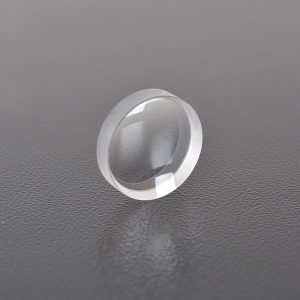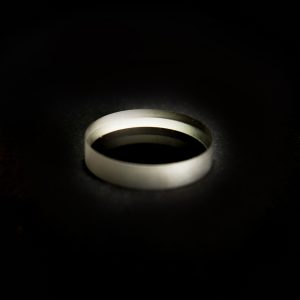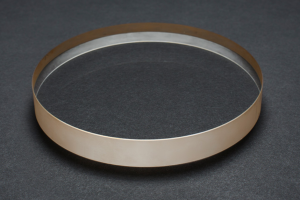
Cemented Prism: a Precision Tool in the Optical World
Cemented prism integrates multiple optical functions with precision bonding technology. Through high refractive index materials and precise angle design, it realizes beam correction, image rotation and dispersion compensation, becoming a core component of laser systems, spectrometers and imaging equipment. Its compact structure and weather resistance promote the upgrade of optical instruments. In the future, it will be deeply integrated into virtual reality and autonomous driving, providing key support for the expansion of technological boundaries.
In the field of optics, prism is a common optical element used to change the propagation direction of light and decompose or synthesize light beams. As a special type of prism, cemented prism plays an important role in optical systems due to its unique structure and performance. This article will introduce the basic principles, manufacturing processes, application fields and advantages of cemented prisms in detail.
1. Basic principles of cemented prisms
Cemented prisms are composite prisms formed by bonding two or more prisms together with optical adhesives. Compared with single prisms, cemented prisms can achieve more complex optical functions, such as dispersion correction, beam deflection, image rotation, etc. Its working principle is based on the refraction and reflection of light. Through the combination of different prisms, the glued prism can accurately control the propagation path of light.
The design of glued prisms usually needs to consider the following factors:
1. Material selection: Different prism materials have different refractive index and dispersion characteristics. Selecting a suitable material combination can achieve a specific optical effect.
2. Glue: The optical properties of the glue (such as refractive index, transmittance, etc.) must match the prism material to ensure that the propagation of light is not affected.
3. Angle design: The angle design of the prism determines the deflection direction and angle of the light. Accurate angle calculation is the key to the design of glued prisms.
2. Manufacturing process of glued prisms
The manufacturing process of glued prisms involves multiple precision steps, mainly including:
1. Prism processing: First, according to the design requirements, the optical glass or crystal material is processed into a prism of a specific shape and angle. This process requires high-precision cutting, grinding and polishing technology to ensure the flatness and optical performance of the prism surface.
2. Gluing process: The processed prisms are bonded together with optical glue. The coating of the glue must be uniform, and the temperature and pressure need to be strictly controlled during the gluing process to ensure the thickness and uniformity of the glue layer.
3. Curing and testing: After gluing, the prism needs to be cured under specific conditions to ensure the stability and optical properties of the glue. The cured glued prism needs to undergo strict optical testing, including the measurement of parameters such as transmittance, refractive index, and dispersion to ensure that it meets the design requirements.
3. Application fields of glued prisms
Glued prisms are widely used in various optical systems. The following are their main application fields:
1. Optical instruments: In optical instruments such as microscopes, telescopes, and lasers, glued prisms are used for beam deflection, focusing, and correction to improve the imaging quality and performance of the instrument.
2. Laser technology: In laser systems, glued prisms are used for beam synthesis, beam splitting, and wavelength selection, and are widely used in laser processing, medical lasers, and communications.
3. Imaging system: In imaging devices such as cameras and projectors, glued prisms are used for image rotation, correction and dispersion compensation to improve image clarity and color reproduction.
4. Spectral analysis: In spectrometers, glued prisms are used to decompose and synthesize light of different wavelengths, and are widely used in chemical analysis, environmental monitoring and astronomical research.
4. Advantages of glued prisms
Compared with single prisms, glued prisms have the following advantages:
1. Versatility: Through the combination of different prisms, glued prisms can achieve a variety of optical functions to meet the needs of complex optical systems.
2. High precision: The manufacturing process of glued prisms requires high-precision processing and testing to ensure the stability and consistency of their optical performance.
3. Compactness: Glued prisms integrate multiple optical functions into one component, reducing the volume and weight of the optical system and improving the integration of the system.
4. Durability: The glued layer of the glued prism has been specially treated, with good heat resistance, moisture resistance and aging resistance, suitable for various harsh environments.
V. Future Development Trends
With the continuous advancement of optical technology, the design and manufacturing technology of glued prisms are also developing. In the future, glued prisms will develop in the following directions:
1. Material innovation: The development of new optical materials will provide more options for glued prisms, such as high refractive index and low dispersion materials, further improving their optical performance.
2. Manufacturing process optimization: With the advancement of precision machining technology, the manufacturing process of glued prisms will be more efficient and precise, reducing production costs and improving product consistency.
3. Application expansion: With the application of optical systems in more fields, glued prisms will play a greater role in emerging technologies such as virtual reality, augmented reality, and autonomous driving.
Conclusion
As an important component in the optical system, the glued prism plays an irreplaceable role in many fields with its versatility, high precision and compactness. With the continuous advancement of technology, the application prospects of glued prisms will be broader, providing strong support for the development of optical technology.
Through the introduction of this article, I believe that readers have a deeper understanding of glued prisms. Whether you are an optical engineer or an ordinary enthusiast, cemented prisms are worthy of our exploration and research, so as to make better use of this precision tool and promote the innovation and development of optical technology.
Hanzhong Brisun Optics Co., Ltd. Is the high precision optical element manufacturer provides customized production of Various optical lenses, including spherical lens, cylindrical lens, optical window, mirror, prism, filter, metal base mirror and other high-precision optical elements. The base materials include various optical glass, fused quartz, calcium fluoride (CaF2), zinc selenide (ZnSe), germanium (GE), silicon (SI), sapphire, metal and other materials. And provide antireflective film, high reflection film, spectroscopic film, metal film and other optical coatings.
Welcome to OEM and Purchasing!


